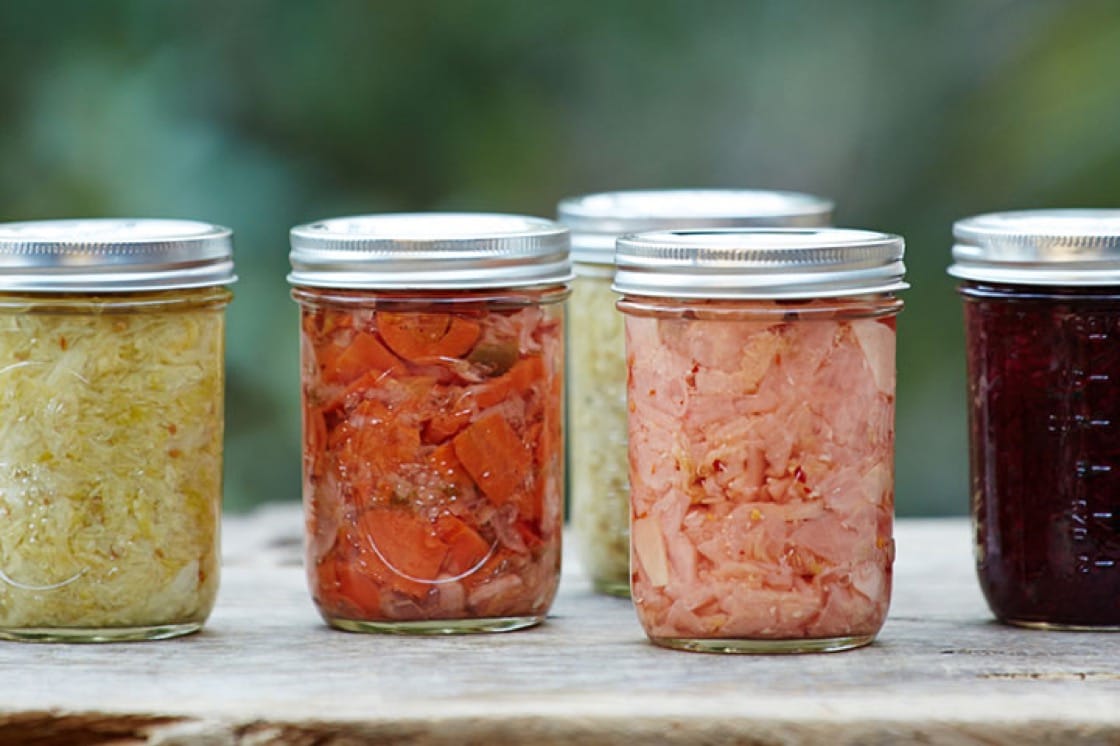Fermentation is an ancient tradition and goes back in time to when certain foods and beverages were pickled and fermented, in the absence of refrigeration - for seasonal and preservation reasons. Today, fermentation is more focused on nutrition rather than preservation, and fermented foods and beverages are gaining interest in the nutrition and culinary world because of their wonderful health-boosting abilities, in addition to bringing new and unique flavour profiles to the table.
Healthy and delicious is definitely a winning combination…and that is exactly what fermented foods and beverages bring to the table. So what are some of the more popular fermented foods and beverages and why are they so good for you? Let's take a look.

How it works:
Fermentation is the process of activating bacteria and cultures to alter and impact the basic nature and properties of a food or beverage, mostly with the intent of boosting its nutritional content.
As diets and food chains changed with time - often wreaking havoc on our digestive health in the process - nutritionists are increasingly embracing fermented foods and drinks due to their high ‘healthy' bacteria content, which promotes healing of the gut and optimal functioning of the stomach.
The list of fermented foods and beverages is endless and some may be familiar foods to you while you may have never even heard of some others. Popular fermented food and beverages include kimchi, tempeh, kombucha, dosa, kefir, miso and sauerkraut. We round up five essential fermented foods you should know below.

Kefir:
More tart than yoghurt, and packed with a high concentration of probiotic bacteria strains, commercially available kefir is usually dairy-based and flavoured in order to make its sourness more palatable. Dairy and non-dairy kefir can be easily made at home, as long as you have the starter kefir grains, which can be bought online or taken from a health-savvy friend.
The grains are then 'fed' with fresh organic milk and fermentation occurs at room temperature for a 12-24 hour period, after which the kefir is strained out and the grains are fed with fresh milk again. Kefir may be blended with honey and berries for a delicious and healthy smoothie drink that even little ones will love. And because gut bacteria dictate our immune systems, kefir is a great immunity-booster as well.

Sauerkraut:
If you know sauerkraut as that delectable, crunchy and tangy salad of German origin (not to be confused with coleslaw) that might be served alongside some gourmet sausages, then you should also know that this finely shredded cabbage is packed with rich bacteria that is really good for you and is also very easy to make at home.
If you’re looking to experiment with fermenting foods at home, sauerkraut is a good one to start with, as nothing more than cabbage and salt is required to reveal the wonders of lacto-fermentation, a safe and reliable (and simple!) method to ferment fruits and veggies. Sauerkraut is perfect with grilled meats and a healthy little side dish to have on hand. Just keep a jar of it in the fridge next to those crunchy pickles and relishes.

Kombucha:
A fermented lightly sweetened tea that is slightly effervescent, kombucha has been around for more than 2000 years and is known as an immortal health elixir in ancient Chinese culture. Kombucha is made by adding live cultures in the form of a beige or white rubbery pancake (otherwise known as 'scoby' bacteria, or 'symbiotic culture of bacteria and yeasts') into black or green tea. The yeasts eat most of the sugar in the tea, transforming the liquid into a slightly sour, refreshingly fizzy, fermented (but largely non-alcoholic) beverage that tastes of tart green apple mixed with deep stone fruits.
Relatively low in calories and sugar and packed full of vitamins, minerals, enzymes and organic acids, kombucha is considered by functional medicine experts to support detoxification, joint care and cancer prevention.

Kimchi:
The pickled side-dish that is a staple at any Korean meal is in fact a brilliantly spiced cousin to sauerkraut, offering similar good-for-you gut-boosting bacteria and immense health benefits. Kimchi is typically a blend of cabbage, garlic, scallions and often features other vegetables such as carrots, chili peppers and radish, fermented along with salt and seasoning.
Kimchi is known to be able to help fight ageing (hurrah!) and maintain healthy levels of cholesterol, among dozens of other health benefits. Many consider kimchi to be one of the healthiest foods on earth, so give that a thought the next time you tuck into a comforting and flavourful Korean meal.

Tempeh:
Often confused with tofu, tempeh is a fermented soy-based food made by an overnight culturing process that binds soybeans into a firm, cake-like form. Tempeh originally comes from Indonesia but is now loved by vegans globally as a rich protein source and is often used as a meat substitute in vegetarian restaurants. High in nutrients, tempeh has a nutty, smoky and almost earthy taste and a more versatile culinary application than tofu. Tempeh is also scientifically proven to be high in isoflavone genistein, which is known to have anti-inflammatory and even anti-tumor effects and can be very good for general health - provided too much is not eaten.




















